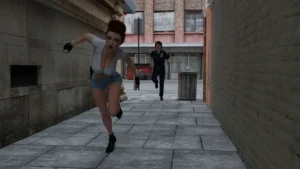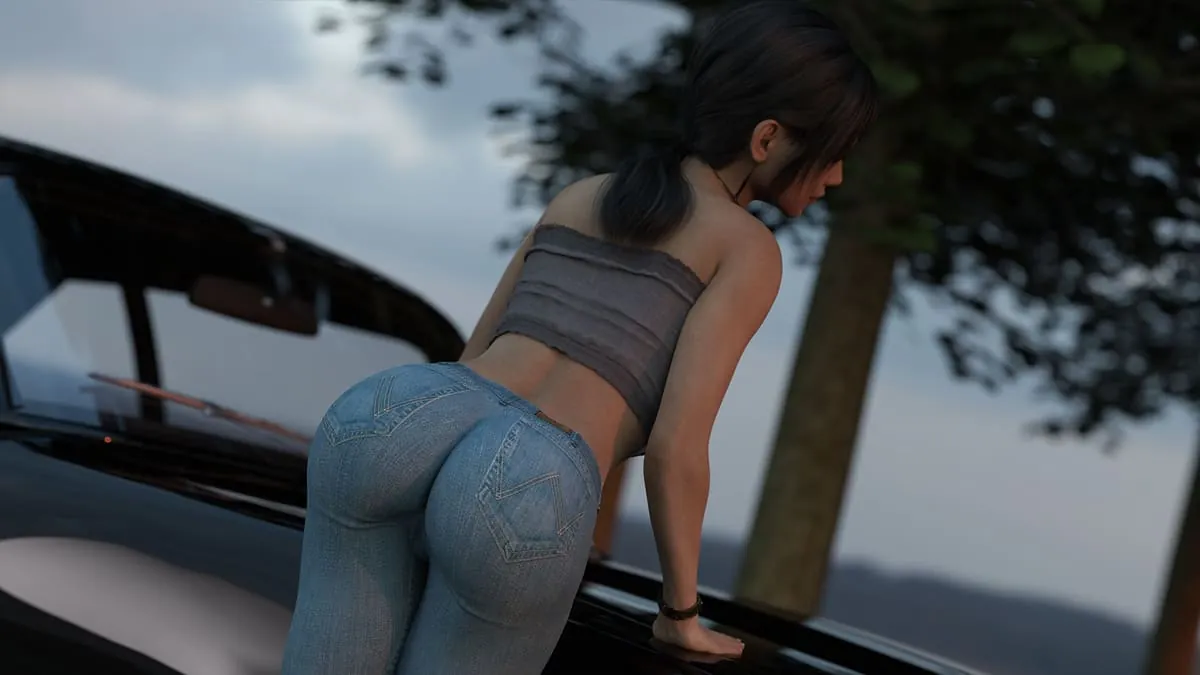
Luna’s Fall from Grace
Play Luna’s Fall from Grace
Luna’s Fall from Grace review
Explore the narrative, characters, and world-building of this medieval fantasy visual novel
Luna’s Fall from Grace stands as a compelling narrative experience set in a richly detailed medieval fantasy world. This visual novel explores themes of redemption, power, and personal agency through its protagonist’s journey. The game builds upon an expansive universe with deep lore and interconnected storytelling. Whether you’re a fan of narrative-driven games or curious about the game’s world-building, understanding the story’s foundation, character development, and thematic elements provides insight into what makes this title resonate with players. This guide explores the key narrative components that define Luna’s Fall from Grace.
The World and Setting of Luna’s Fall from Grace
Step into a world where ancient magic whispers through crumbling castle walls and the weight of centuries-old decisions hangs heavy in the air. 🏰 That’s the immediate and powerful feeling you get from the Luna’s Fall from Grace setting. As someone who has explored countless digital realms, I can tell you that the medieval fantasy visual novel world crafted here is something special. It doesn’t just feel like a backdrop; it feels like a living, breathing character in its own right, with a history that has literally shaped the ground you walk on.
This isn’t a generic, Tolkien-esque fantasy land. The Luna’s Fall from Grace lore is deeply rooted in consequence. The world you explore exists hundreds of years after the cataclysmic events of a prior story, Diatima’s Isekai. Think of it like walking through Europe and stumbling upon Roman ruins—you can feel the echo of a grand, lost civilization. The castles aren’t just for show; they’re repurposed remnants. The forests aren’t merely pretty; they’ve grown over ancient battlefields. This approach to fantasy game world-building creates a profound sense of mystery and discovery. You’re not just learning history from a book; you’re piecing it together from the environment itself, and it makes every revelation feel earned.
Medieval Fantasy World and Historical Context 🏰⚔️
The visual novel medieval setting in Luna’s Fall from Grace is a masterclass in grounded fantasy. We’re not talking about high-flying wizards and dragon armies on the march (though magic is very real here). Instead, the game presents a world in a state of quiet, post-magical decay. Society is rebuilding, but it’s a gritty, realistic process. The technology level is firmly medieval—think swords, armor, and castles—but it’s all filtered through the lens of a world that once knew far greater wonders.
I remember one particular scene early on where the protagonist, Luna, is walking through a marketplace. It wasn’t the bustling, cheerful hub you often see in games. Stalls were selling simple, hand-forged tools, and people were bartering for essentials. What caught my eye was that some of the building materials were clearly scavenged from much older, more elegant structures. A wall was made of mismatched stone blocks, one of which was intricately carved with a glowing rune that nobody in the market seemed to notice or understand. That single, quiet detail told me more about the world’s fallen state than any exposition dump ever could.
This historical context is the engine of the entire game narrative and backstory. The “Great Collapse” that followed the events of the previous era isn’t just a footnote; it’s the reason the political landscape looks the way it does. Old noble families were wiped out, new factions rose from the ashes, and knowledge of advanced magic became fragmented and feared. This directly influences character motivations:
- Luna’s internal conflict is driven by a legacy she doesn’t fully understand, a magical birthright that is both a blessing and a curse in a world that has learned to distrust such power.
- The antagonists are often those trying to either reclaim the “lost glory” of the past or those so terrified of its return that they seek to stamp out any remnant of it.
- The common people are just trying to survive, largely ignorant of the epic struggles that shaped their world, which makes their stories and interactions feel genuinely poignant.
The genius of this medieval fantasy visual novel world is that it uses a familiar framework—castles, knights, and kingdoms—but subverts it with a deep, consequential history. You’re not just in a fantasy world; you’re in the aftermath of one.
Connection to Previous Games and Standalone Experience 🔗➡️🎮
Now, you might be thinking, “Hundreds of years after Diatima’s Isekai? Do I need to have played that game to understand this one?” This is a crucial point, and the answer is a resounding no. The developers have been incredibly smart about this. Luna’s Fall from Grace is designed from the ground up as a Luna’s Fall from Grace standalone game.
Think of it like this: you don’t need to know the intricate history of the Roman Empire to appreciate the beauty and mystery of visiting the Colosseum. The ruins tell their own story. Similarly, the events of the past in this game are treated as mythology, legend, and half-forgotten history. Characters in Luna’s Fall from Grace reference the “Age of Convergence” or the “Calamity” in the same way we might reference Atlantis or Camelot—they know something monumental happened, but the details are fuzzy and debated.
From my own experience jumping in, the connections actually enhanced the mystery. Finding a relic from the old world or hearing a bard sing a distorted version of an old hero’s tale made the world feel bigger and more authentic. It created this wonderful “archaeology” feeling, where I was uncovering layers of history myself. The game provides all the context you need within its own story. The Luna’s Fall from Grace lore is presented through Luna’s eyes; as she learns about her world and its past, so do you.
For those who are familiar with the previous title, these elements are delightful Easter eggs that add rich layers of meaning. But for new players, they simply contribute to the depth and realism of the world. The focus is always on Luna’s personal journey—her fall, her struggles, and her redemption—and that story is completely self-contained and powerful on its own merits.
To make this crystal clear, here’s a breakdown:
| For New Players (Standalone Experience) | For Returning Fans (Connected Experience) |
|---|---|
| No prior knowledge needed or expected. | Spot familiar names, places, and concepts from history. |
| Past events are treated as mysterious world-building, adding depth. | Understand the true significance and causes behind the world’s current state. |
| The story is 100% focused on Luna’s new, self-contained arc. | Appreciate the long-term consequences of the previous story’s outcome. |
| All necessary information is provided naturally through the narrative. | Enjoy a sense of witnessing history unfold across centuries. |
Environmental Design and Atmospheric Elements 🖼️🌫️
If the historical context is the skeleton of the world, then the environmental design is its soul. The fantasy game world-building in Luna’s Fall from Grace is achieved not through lengthy codex entries, but through a masterful use of environmental storytelling. Every background, every piece of music, and every sound effect is meticulously crafted to build immersion.
Let’s talk about the visuals. The art style is a beautiful blend of painterly backgrounds and detailed character sprites. You’ll explore:
- The Sunken Cathedral: A once-great place of worship now half-submerged in a misty lake, its stained-glass windows shattered and its pews covered in silt. 🕍
- The Ashen Woods: A forest where the trees are pale white and ghostly, said to have grown from the ashes of a magical fire that burned for a decade.
- The Citadel of Whispers: The current seat of power, a cold, imposing fortress built around the crystalline ruins of a far more elegant ancient structure, literally encasing the past in stone.
I was genuinely stunned during a sequence in the Sunken Cathedral. The way the light filtered through the murky water onto the stone floor, illuminating faded murals of forgotten gods, created an atmosphere of such profound loss and beauty that I just sat there for a minute, taking it all in. It told a story without a single word of dialogue.
This commitment to atmosphere extends to the sound design. The music is a haunting mix of medieval instruments and ethereal vocals that perfectly captures the tone of a world living in the shadow of its own past. In quiet moments, you hear the wind whistling through broken castle towers, or the drip of water in a deep dungeon. It’s these details that solidify the Luna’s Fall from Grace setting as a top-tier narrative environment.
Pro Tip: Don’t rush through the scenes! The artists and writers have hidden so much story in the background details. Take a moment to really look at the environments between dialogue choices; you’ll often spot clues about the world’s history or a character’s state of mind.
The visual novel medieval setting also directly influences the gameplay. Your choices often revolve around navigating the complex social and political landscape of this rebuilt world. Do you embrace the old magic and risk being ostracized? Do you side with the traditionalists who want to suppress the past, or the radicals who want to reclaim it? The setting isn’t just a stage; it’s the source of the game’s central conflicts.
Ultimately, the world of Luna’s Fall from Grace is a character you get to know and care about. Its scars, its mysteries, and its fragile beauty are integral to the experience. The masterful game narrative and backstory are woven directly into the environment, inviting you to not just play a game, but to explore a history and lose yourself in a place that feels truly alive. It’s a journey that stays with you long after you’ve seen the final credits. ✨
Luna’s Fall from Grace delivers a multifaceted gaming experience that seamlessly weaves together compelling narrative, meaningful player agency, and engaging gameplay mechanics. The game’s medieval fantasy setting provides a rich backdrop for Luna’s personal journey, while the standalone nature ensures accessibility for new players despite its connection to previous titles. Through character customization, branching narrative choices, and integrated gameplay systems, the title creates a personalized adventure where your decisions genuinely matter. Whether you’re drawn to the action-adventure elements, the puzzle-solving challenges, or the opportunity to shape Luna’s destiny through meaningful choices, Luna’s Fall from Grace offers a distinctive experience that respects player agency and delivers continuous engagement through regular content updates and multiplayer features.


















